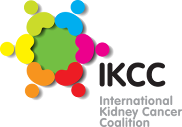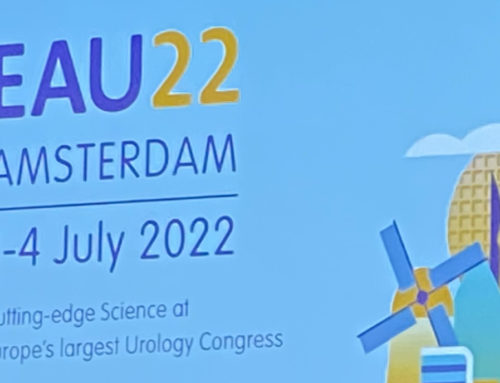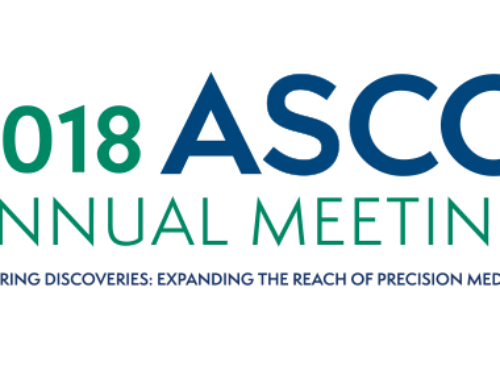 Note: The following summary was prepared by patient advocates for the benefit of patient organisations who focus on kidney cancer. While this summary has been medically reviewed, the information contained herein is based upon public data shared at this meeting and is not intended to be exhaustive. Patients should ask their physician about any information that pertains to their care.
Note: The following summary was prepared by patient advocates for the benefit of patient organisations who focus on kidney cancer. While this summary has been medically reviewed, the information contained herein is based upon public data shared at this meeting and is not intended to be exhaustive. Patients should ask their physician about any information that pertains to their care.
Summary of Kidney Cancer Take-Home Messages from ESMO 2017
Over 24,000 people attended the ESMO (European Society of Medical Oncology) meeting in Madrid from September 8–12, 2017. The International Kidney Cancer Coalition was present with a booth to raise awareness and to also attend medical and patient advocacy sessions. This year was a landmark year in that patient advocates were treated as healthcare professionals and granted ESMO membership privileges. Along with sharing our perspectives, we also shared over 30 kg of green (IKCC) apples with our oncology colleagues.
Checkmate-214 (immune-oncology agents ipilimumab+nivolumab vs sunitinib in 1st line metastatic renal cell carcinoma)
Undeniably, from the kidney cancer point of view, the most talked-about presentation at ESMO 2017 was the results of the Checkmate-214 study (ipi–nivo vs sunitinib in 1st line mRCC). The most striking results presented were a complete response (i.e. no evidence of disease) rate of 16% in patients with intermediate and poor risk features whose tumour tested positive for PD-L1.
The key take-home message is that this combination resulted in an overall survival advantage for the entire population in the study, but this survival advantage shown in these data was mainly driven by the patients who were defined as intermediate or poor risk at the outset of the study. From the patient perspective, it’s important to note that, in these data, the patients with low risk disease seemed to have better outcomes with sunitinib than with this new combination.
For the patient community, this represents a renewed emphasis on the importance of risk stratification in determining which therapy is best for them. For the majority of patients who are low risk, treatments such as sunitinib or pazopanib may remain the standard for this patient group.
One point that patient advocates should pay attention to is the significant number of patients on the ipi–nivo combination arm who required steroids (60%) to manage side-effects. There are significant toxicities associated with steroid use. Although this study presents really exciting results for the kidney cancer community, the IKCC raises the need for improved side effect management strategies for these patients, and encourages patients to continue enrolling in clinical trials that are testing other combinations including immune checkpoint antibodies together with targeted therapies.
For further information: ESMO 2017: Nivolumab Plus Ipilimumab versus Sunitinib in First-Line Treatment for Advanced or Metastatic RCC
Surgical Trial – SURTIME
The SURTIME trial investigated whether the upfront use of systemic treatment can select patients with metastatic disease who benefit from surgery to remove the primary kidney tumour. The trial was too small to reach any definitive conclusions. Progression free survival was the same at the 28-week mark. However, the arm with delayed nephrectomy had a 24-month overall survival compared to a 16-month overall survival in the arm with upfront nephrectomy.
Although exploratory, this study suggests that treating patients with systemic therapy first may help us choose those advanced kidney cancer patients who would truly benefit from nephrectomy.
S-TRAC (Sunitinib in Adjuvant RCC Setting)
One thing that kidney cancer care lacks at the moment is adjuvant treatment (treatment immediately following surgery to prevent or delay recurrence). Last year, data from the S-TRAC clinical trial revealed an improvement in relapse-free survival in patients with intermediate and high risk recurrence features who received sunitinib in the adjuvant setting, but the treatment did not change their overall survival. This year, an update of the trial demonstrated that toxicities for patients on the sunitinib arm were as expected for patients on this treatment, and approximately 70% remained on treatment after 9 months but only 56% at the 12-month endpoint.
At this point in time there is no clear indication that this treatment extends overall survival in intermediate or high risk patients in the adjuvant setting. We await the recommendations from FDA Oncology Drugs Advisory Committee (ODAC) regarding approval of this agent on Sept 19th. Regardless of approval status, due to the significant toxicities associated with this agent, it is incumbent upon both the physician and patient community to identify the group of patients who will truly benefit of adjuvant therapy with sunitinib.
Reporting from other Early Stage Combination Results
While we need to caution that these were small studies, two were of interest:
- The cabozantinib+nivolumab+ipiliumab combination trial showed that this combination was tolerable across GU cancers. However, only two patients with renal cell carcinoma (sarcomatoid) were included. These data form the basis of a Phase 3 trial of cabo + nivo vs cabo+nivo+ipi (vs sunitinib) now recruiting (Checkmate-9ER).
- The lenvatinib+pembrolizumab combination trial (Phase 1B/2) assessed this combination in individuals with advanced renal cell carcinoma, of which 40% had not been previously treated. The response rate for the overall population was an astounding 63%, rising to 83% in those who had not been previously treated. This combination is also now the research arm of a randomized Phase 3 study (randomized to sunitinib) in 1st line metastatic renal cell carcinoma.
From a patient advocate’s perspective, the data from Checkpoint-214 raises the question of whether sunitinib remains an appropriate comparator arm for these studies.
CABOSUN
ESMO also featured an update on the CABOSUN data, a randomized Phase 2 study comparing cabozantinib to sunitinib in previously untreated patients who had intermediate and poor risk features. This presentation confirmed superiority of cabozantinib over sunitinib after an independent imaging review.
This trial establishes cabozantinib as a therapeutic option for previously untreated patients, particularly with intermediate or poor risk features. Although this agent is clearly effective, proactive side effect management is essential to optimise patient outcomes. Again these data raise the question of whether it is appropriate to use sunitinib as the comparator arm in future studies.



